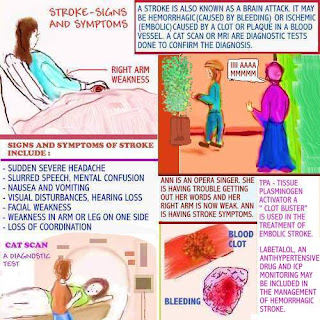ADDRESSING PATIENT ASSESSMENT
Updated 7/25


Scenario: Mrs. R is a 48 year-old female who has
a history of a previous myocardial infarction. She
was admitted 2 days ago with mild chest pain.
a history of a previous myocardial infarction. She
was admitted 2 days ago with mild chest pain.
She was resting comfortably when she suddenly
started feeling short of breath. She is anxious and
calls the nurse.
What actions did the nurse take?
-The nurse reassures Mrs. R. She does an assessment,
vital signs, and oxygen saturation. She gives oxygen
per protocol.
-The nurse notifies the doctor of what has occurred
and her assessment findings. She also mentions the
vital signs, low oxygen saturation, and steps that
were taken to correct the saturation.
started feeling short of breath. She is anxious and
calls the nurse.
What actions did the nurse take?
-The nurse reassures Mrs. R. She does an assessment,
vital signs, and oxygen saturation. She gives oxygen
per protocol.
-The nurse notifies the doctor of what has occurred
and her assessment findings. She also mentions the
vital signs, low oxygen saturation, and steps that
were taken to correct the saturation.
The doctor gives further orders, including a transfer to CCU.
Why chest pain assessment?
It must be remembered that a patient with heart damage will
also experience chest pain. Assessment of the pain should
also be included. This may be sharp, with radiation to shoulder
/jaw, or it may feel like chest pressure.
Helpful Hint:
Chest pain should always be assessed.
Enjoy learning more about this topic by clicking on the link:
Simplifying Cardiogenic Shock
It must be remembered that a patient with heart damage will
also experience chest pain. Assessment of the pain should
also be included. This may be sharp, with radiation to shoulder
/jaw, or it may feel like chest pressure.
Helpful Hint:
Chest pain should always be assessed.
Enjoy learning more about this topic by clicking on the link:
Simplifying Cardiogenic Shock
Scenario: In the image above, Ann is an opera
singer. While on stage, she suddenly starts having
trouble getting her words out. Her right arm also
feels weak. These symptoms are classic of someone
experiencing a stroke.
Signs and stroke symptoms:
- sudden , severe headache
- slurred speech, mental confusion
- slurred speech, mental confusion
- nausea and vomiting
- visual disturbances, hearing loss
- facial weakness
- weakness in arm or leg on one side


0 Comments:
Post a Comment
<< Home